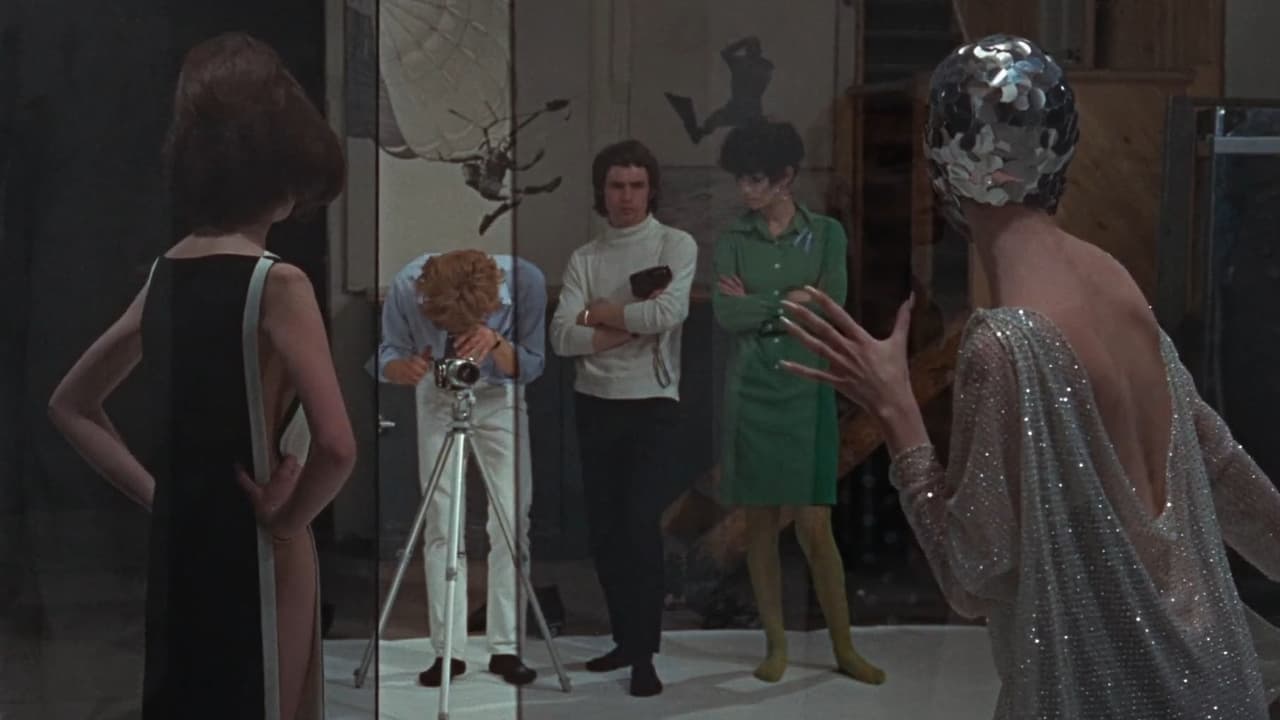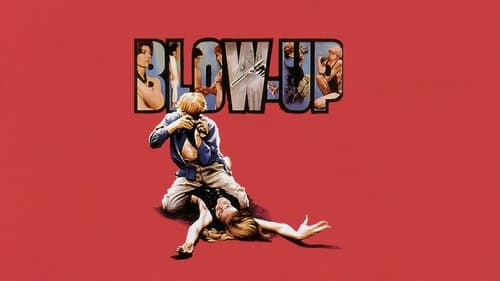



Save your money for something good and enjoyable
Highly Overrated But Still Good
There is just so much movie here. For some it may be too much. But in the same secretly sarcastic way most telemarketers say the phrase, the title of this one is particularly apt.
View MoreIt is both painfully honest and laugh-out-loud funny at the same time.
View MoreClassic!A movie so good it's a shame not to watch it. Pure art. Fantastic!
View MoreI´m not a film specialist. I´m also not a casual viewer. I got the chance to see this in a cinema in 2018 and I must say it doesn't hold up at all. Actual plot? Character development? Common sense? None of this are to be found. Art is supposed to create a feeling in the viewer. The only feeling that arose from my insides was of complete boredom. I don´t mind a movie being philosophical, but this does not made me think at all. I was simply unable to connect the dots because I believe the makers of the film have intentionally made it uncomprehensible. The only emotion I got? I was expecting David Hemming's character to bump his head on the wooden beam that was too low in his messy studio. But they didn´t even give us that pleasure. I have seen Dali´s paintings which made more sense than this "movie". Hell, "Un Chien Andalou" doesn´t make sense either but atleast it has a little of shock value and historical importance. This? This is utter garbage. If you want to see what the 60's were like you can literally watch other movie made around the same era. I even gave «Batman '66 » a higer rating than this, so just guess how boring and bad it can get to be.A movie that begins in the absurd, goes nowhere and ends in more ridicule. Avoid this snobbish trash and go watch a real film with actual consolidated elements.
View MoreMichelangelo Antonioni is a director whose work(after only two films) I highly admire, but has so far left me feeling cold and uncaring. First things first Blow-Up is a brilliantly constructed film. Set in London during the 'swinging sixties' the film follows David Hemmings fashion photographer Thomas. Whilst out shooting various locations Thomas comes across a couple in a park, piqued by his interest he begins to photograph them. When he's caught by Jane(Vanessa Redgrave) she demands they be handed over. As he becomes curious by her erratic behaviour, he hands over the pictures but keeps the negatives. Upon blowing them up, he starts to realise something more sinister may of been in play.Blow-Up is a film of it's time, and in some places it hasn't aged well. The films pacing was at times frustratingly ponderous. Though the film felt unfocused by design, it still left me itching to see what was going to happen. I also don't think it helped that I watched Brian De Palma's remake Blow-Out first(which I preferred far more then this film). Blow-Up is more interested in the sex, drugs and rock and roll of the time, spending large portions just hanging out with it's main character, as he goes about his daily activities. Whilst I did enjoy parts of this carefree attitude to film-making. I was more interested in the potential murder plot.Part of me thinks that I went into this film expecting something I wasn't going to get, whilst that's probably true to some degree. I still stand by my original assessment that Antonioni is a director whose work for me is admirable but ultimately unlikable.
View MoreMeteorically successful society photographer goes about his work in Swinging Sixties London. While scouting further shots for his forthcoming book he chances on and photographs an ostensibly romantic couple in a park. The woman notices, but her vehement demand for the negatives is denied. Back at his fashion studio, progressive enlargement of the images seems to reveal a murder, made more mysterious by the urgent re-appearance of the woman (who has followed him) and her renewed pleas. Our hero returns to the park at night, and finds a body in the location suggested by his photographs. Meanwhile, his studio has been ransacked, and nearly all the photographs stolen. Early the next morning he returns, finding the corpse vanished. While in the park, he watches a group of young people play a make-believe game of tennis. At first only slightly amused, he finds himself joining in. At that moment he too vanishes, and the film, which covers only a 24-hour period, ends.So much for the nominal plot. When I first saw it in 1967, I was only impressed by its modern decadence. The many subsequent viewings have however revealed an extending layered interest. Part of that must be nostalgia, for whatever the fashion insiders of the time say, it paints a thoroughly vivid picture of how London life felt and was perceived in that period.It appears to be generally accepted that Carlo Ponti withdrew funding for this the first Antonioni film made both in colour and in English when it ran extravagantly over-budget, with the crew sent back to Italy and Antonioni told to make the film from the footage already in the can. Ronan Casey, playing the corpse, says there was an extended murder plot involving Sarah Miles, Vanessa Redgrave and her lover, (Jeremy Glover) (except for Reg, Ron and Bill, the conduits of photographic and painted images, none of the characters has a name in the film, although they do in the script). This version of events is supported by Redgrave and Glover's appearance in the film in unexplained circumstances (Glover spying on the hero in the restaurant, and both in a Rover 2000 following the photographer's car). Of course, that does not mean that, as edited, the 'full' film would have amounted to no more than a conventional murder mystery.At least three main threads interweave (apart from the ideas of image and reality which have been extensively addressed by others). The first is the character of the hero. The young protagonist has found extreme success early, most youthful ambitions already satisfied. Beautiful and naked girls, treated as no more than the foot soldiers of the fashion industry, throw themselves at him. Ennui has set in ("I'm off London this week" – "If I was rich I would be free") and he seems bored by a (then) outrageous society marijuana party, and by a Yardbirds performance. He has already seen through, but not wholly rejected, the excesses of 60s culture. Although often off-hand and abrupt, sometimes arrogant, he is searching for a worthwhile commitment, for meaning and for value and is open to ideas. Thus, his luxurious Rolls Royce is always, rain or shine, open-topped (unusual in England), he donates to rag-week collectors/student protesters (an important feature of the 1960s) with a smile, and accommodates their anarchic rejection placard ("Go Away"), again with amusement. He tries to find serious meaning in his disguised and gritty doss-house photography but perhaps it only adds up to a business opportunity. He is interested in an antique- shop, but only in the end for redevelopment potential. He describes a non-beautiful wife, easy to live with, and children, but then denies their existence, perhaps because they are simply his present ideal. The possible murder represents the first glimmer of challenge to his humanity. When this fails, he is drawn into the tennis-game, and becomes one with both reality and disappearance (unreality), when he makes himself complicit in the group fantasy.The second layer consists of the language of cinematography. The colour and framing are stylised, stylish as well as realistic. Camera and protagonist viewpoints sometimes do not coincide, in a way that is non-neutral, giving the camera a narrative function. Most important is the highly original sound design. Long takes of only ambient noise (not silence- with audible planes overhead, road-drills, ice-cream vans) including of course the famous wind in the trees. There is no background music (except extra-diegetically over credits). All other sound, including music, is strictly diegetic – we are always shewn the radio, the spinning gramophone record, the switching on and off. The tennis match is not in fact silent – we hear footsteps, and the wind – the noise of a mimed performance. We then hear, but do not see, ball on racquet, the only non-diagetic moment in the film. Simon and Garfunkel's Sound of Silence reached Nr 1 in the US in January 1966. Possibly Antonioni had this in mind – the reference to neon gods perhaps the inspiration for the scaffolded neon tower he built behind Maryon Park. The invisible sounds are almost the most real features of the film.The third thread is the symbolism. In most indoor locations in the film there is a bust – perhaps life and death, history, or another, 3D, type of image. The occasional child – the hero particularly looks at the child each time. Communication: the white telephone in the studio, the red telephone in the street, the blue radio-telephone in the car (Blue 439). Maryon Park is green, and the photographer wears a green jacket. But the park is surrounded by urban life (Antonioni built the neon tower and the white gable-ends to emphasize this point), so it is only nominally wild, natural or real, or perhaps an oasis (as well as the Kennedy grassy-knoll and the staple location for Cold-War spy-thrillers). The students, a linking theme, are also a Greek chorus, commenting on the search for truth, meaning and value.
View More